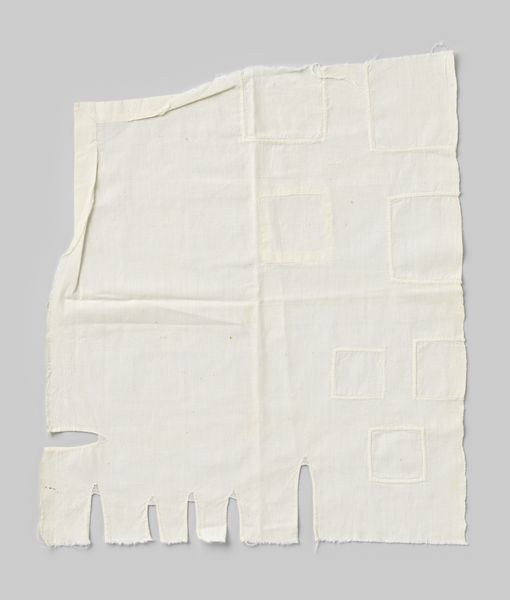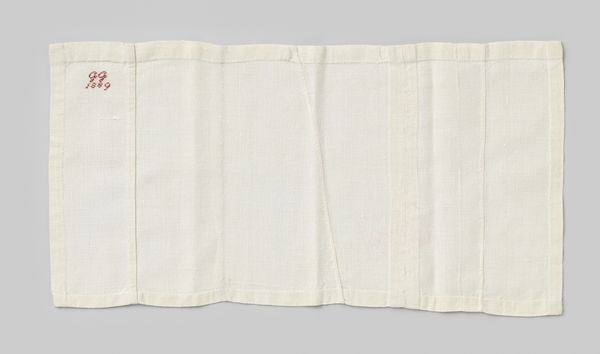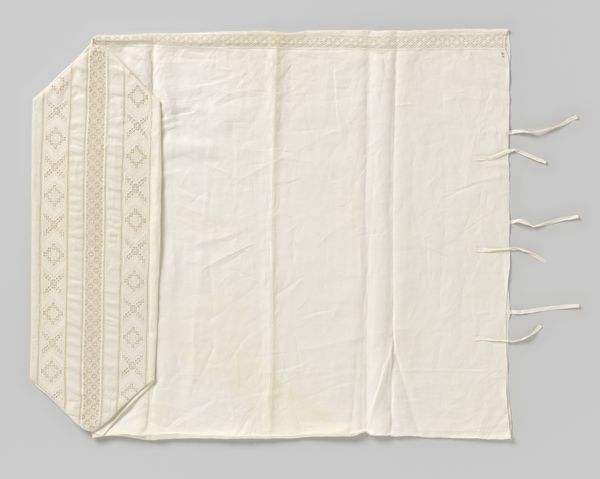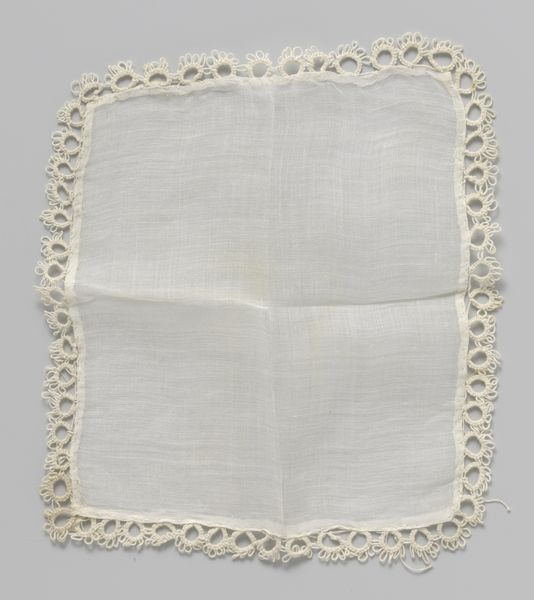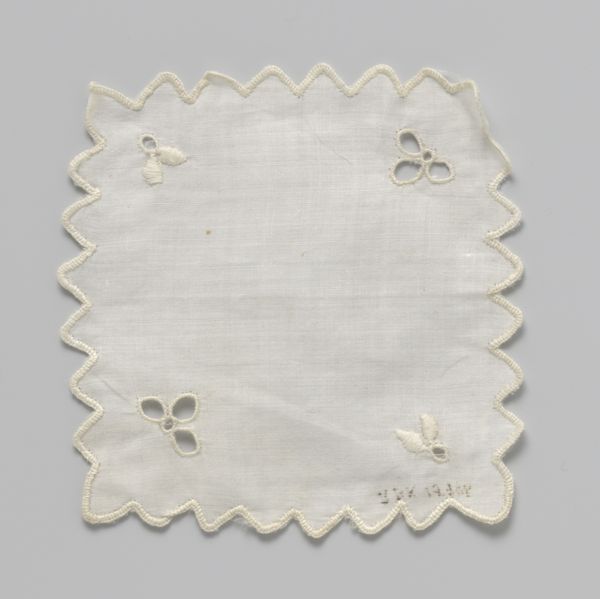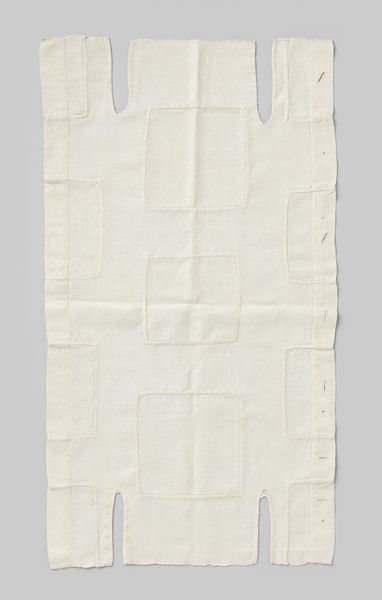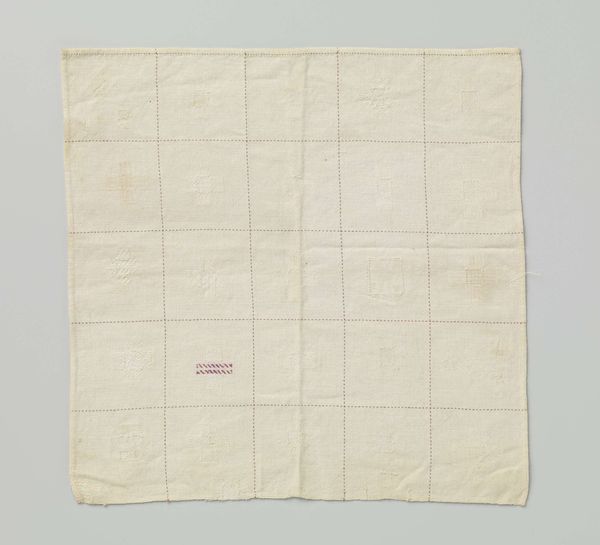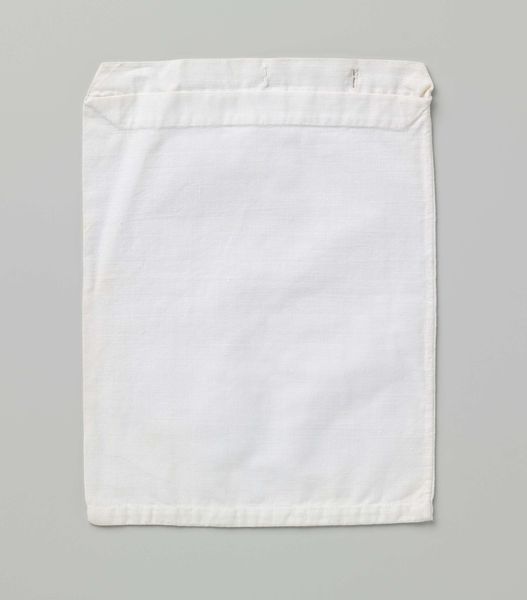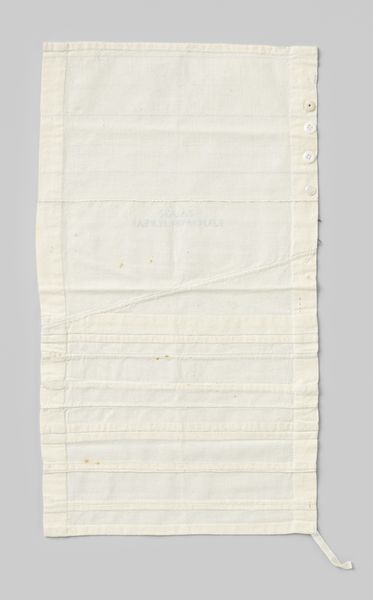
textile, cotton
#
textile
#
cotton
#
decorative-art
Dimensions: length 87 cm, width 87 cm
Copyright: Rijks Museum: Open Domain
Curator: Here we have a cotton pillowcase, believed to have been crafted around 1932 by a person named M. Stevens. The piece showcases a pleated flounce, adding a delicate touch to the overall design. What are your initial thoughts? Editor: My first impression is that there’s something simultaneously comforting and unsettling about this piece. It evokes a sense of domestic tranquility but also hints at fragility, given its delicate fabric and aged appearance. It seems both intimate and distant. Curator: Indeed. The very act of crafting something like this, a pillowcase, speaks to a kind of dedication to the details of home life. Consider the floral embroidery. Flowers often represent themes like fleeting beauty and domesticity but also renewal and memory. What does it suggest to you about the artist's life and times? Editor: In the 1930s, we’re in the throes of the Depression. Home craft became both a creative outlet and an economic necessity for women. The subtle floral design might reflect a longing for simpler, more natural times in a world grappling with economic uncertainty. There's an interesting tension between the austerity of the period and the quiet luxury implied by handmade lace. Curator: A luxury in care and skill. But the functionality of it, the intention behind the creation, must speak to both the maker and the user in a unique, yet ultimately familiar way. It's such a familiar symbol of intimacy and the end of the day, the moment we lay our heads. It’s evocative. Editor: Exactly. This piece isn't just an aesthetic object; it's imbued with cultural and historical significance. The anonymity of the creator – simply 'M. Stevens' – reinforces this sense of shared history and lived experience for many unnamed or unknown domestic workers from this period. We must try to recall and record the experiences of the ordinary women in an economy dominated by masculine norms. Curator: Well said. In essence, a humble object, rendered unique through the maker's touch, and transformed into something profoundly suggestive through time. Editor: I agree; it makes you reflect on the broader context of both comfort and struggle that define our shared past and the artifacts that outlive us all.
Comments
rijksmuseum about 2 years ago
⋮
This pillowcase is part of a trousseau made by Belgian nuns around 1932. The monogram consists of the groom’s surname (Brusse) and the bride’s maiden name (Urtebise). When the linen had to be washed and ironed, it was sent from Amsterdam to Brussels. The handwritten laundry label recommends ironing the pleats by hand.
Join the conversation
Join millions of artists and users on Artera today and experience the ultimate creative platform.
